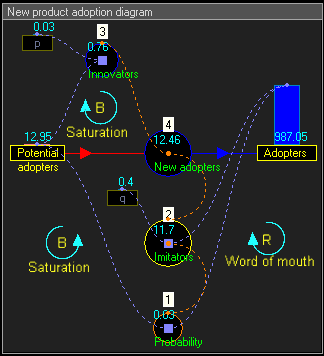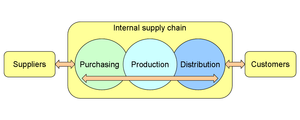Industrial engineer is a branch of engineering that concerns with the development, improvement, implementation and evaluation of integrated systems of people, money, knowledge, information, equipment, energy, material and process. It also deals with designing new prototypes to help save money and make the prototype better. Industrial engineering draws upon the principles and methods of engineering analysis and synthesis, as well as mathematical, physical and social sciences together with the principles and methods of engineering analysis and design to specify, predict and evaluate the results to be obtained from such systems. In lean manufacturing systems, Industrial engineers work to eliminate wastes of time, money, materials, energy, and other resources.
Industrial engineering is also known as operations management, management science, systems engineering, or manufacturing engineering; a distinction that seems to depend on the viewpoint or motives of the user. Recruiters or educational establishments use the names to differentiate themselves from others. In healthcare, for example, industrial engineers are more commonly known as management engineers or health systems engineers.
The term "industrial" in industrial engineering can be misleading. While the term originally applied to manufacturing, it has grown to encompass virtually all other industries and services as well. The various topics of concern to industrial engineers include management science, financial engineering, engineering management, supply chain management, process engineering, operations research, systems engineering, ergonomics, value engineering and quality engineering.
Examples of where industrial engineering might be used include designing a new loan system for a bank, streamlining operation and emergency rooms in a hospital, distributing products worldwide (referred to as
Supply Chain Management), and shortening lines (or
queues) at a bank, hospital, or a theme park. Industrial engineers typically use
computer simulation, especially
discrete event simulation, for system
Universities
US News and World Report's article on "America's Best Colleges 2010" lists schools offering Undergraduate engineering specialties in Industrial or Manufacturing whose highest degree is a doctorate as Georgia Institute of Technology, University of Michigan, Purdue University, Pennsylvania State University-University Park, University of California at Berkeley, Virginia Tech, Texas A&M University, Stanford University, Northwestern University, Cornell University, Milwaukee School of Engineering and the University of Wisconsin–Madison.[1]
History
Industrial engineering courses had been taught by multiple universities in the late 1800s along Europe, especially in developed countries such as Germany, France, the United Kingdom, and Spain[2]. In the United States, the first department of industrial engineering was established in 1908 as the Harold and Inge Marcus Department of Industrial and Manufacturing Engineering at Penn State. In India, the first department was established at the National Institute of Industrial Engineering, Mumbai. Industrial Engineering and Management is provided as an Engineering Course at Under-Graduate level by The Vishweshwariah Technological University or VTU[3], Belgaum, India.
The first doctoral degree in industrial engineering was awarded in the 1930s by Cornell University.
Postgraduate Curriculum
The usual postgraduate degree earned is the Master of Science in Industrial Engineering/Industrial Engineering & Management/Industrial Engineering & Operations Research. The typical MS in IE/IE&M/IE & OR/Management Sciences curriculum includes :
Undergraduate Curriculum
In the United States, the usual undergraduate degree earned is the
Bachelor of Science or B.E. in Industrial Engineering (BSIE). The typical BSIE curriculum includes introductory
chemistry,
physics,
economics,
mathematics,
statistics, properties of materials, intermediate coursework in
mechanical engineering,
computer science, sometimes
electrical engineering, and additional specialized courses in
management,
systems theory, and
computer science.
Salaries and Workfore Statistics
The total number of engineers employed in the U.S. in 2006 was roughly 1.5 million. Of these, 201,000 were industrial engineers (13.3%), the third most popular engineering specialty. The average starting salaries being $55,067 with a bachelor's degree, $64,759 with a master's degree, and $77,364 with a doctorate degree. This places industrial engineering at 7th of 15 among engineering bachelors degrees, 3rd of 10 among masters degrees, and 2nd of 7 among doctorate degrees in average annual salary.[4] The median annual income of industrial engineers in the U.S. workforce is $68,620.
Typically, within a few years after graduation, industrial engineers move to management positions because their work is closely related to management.




